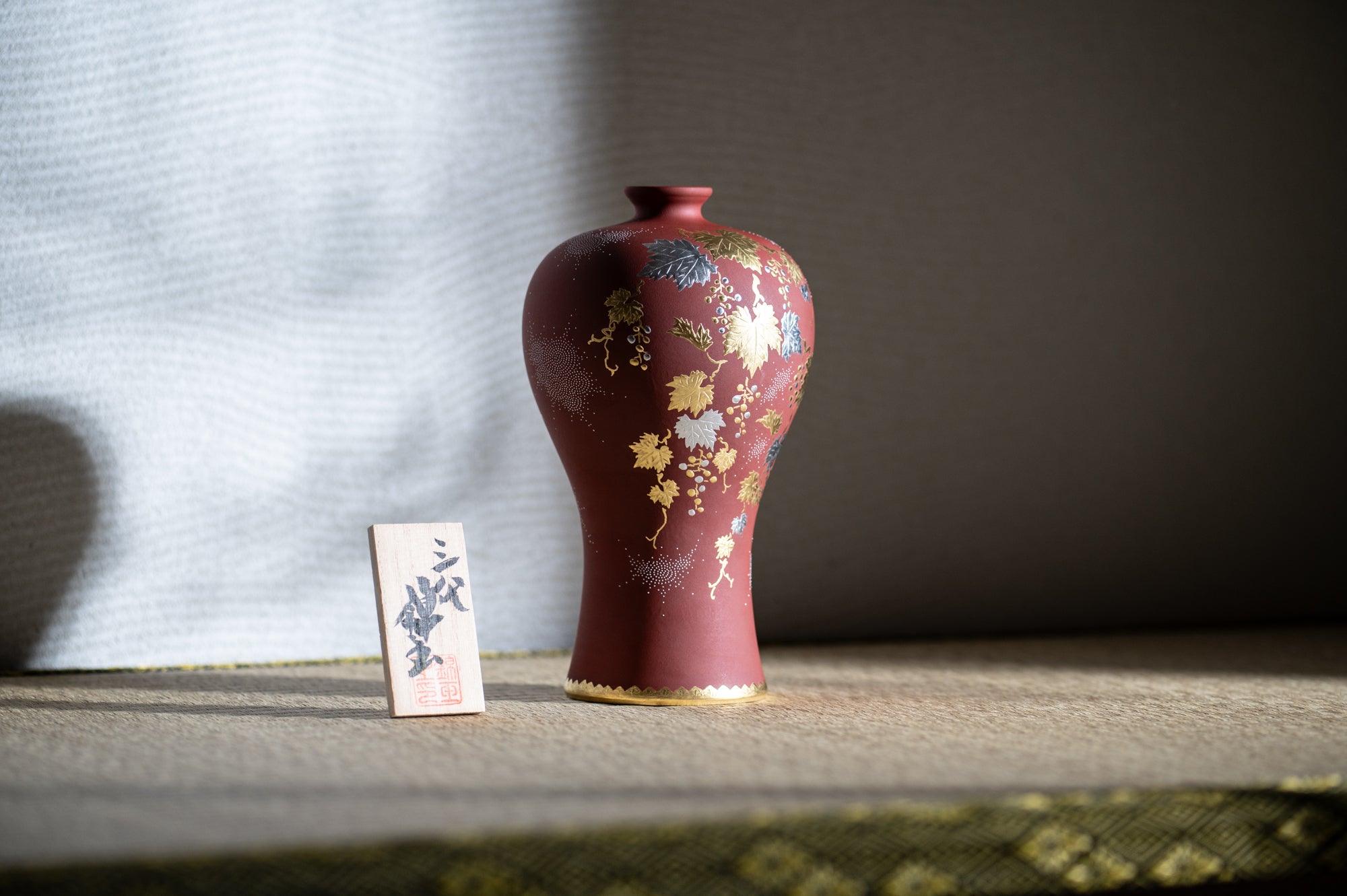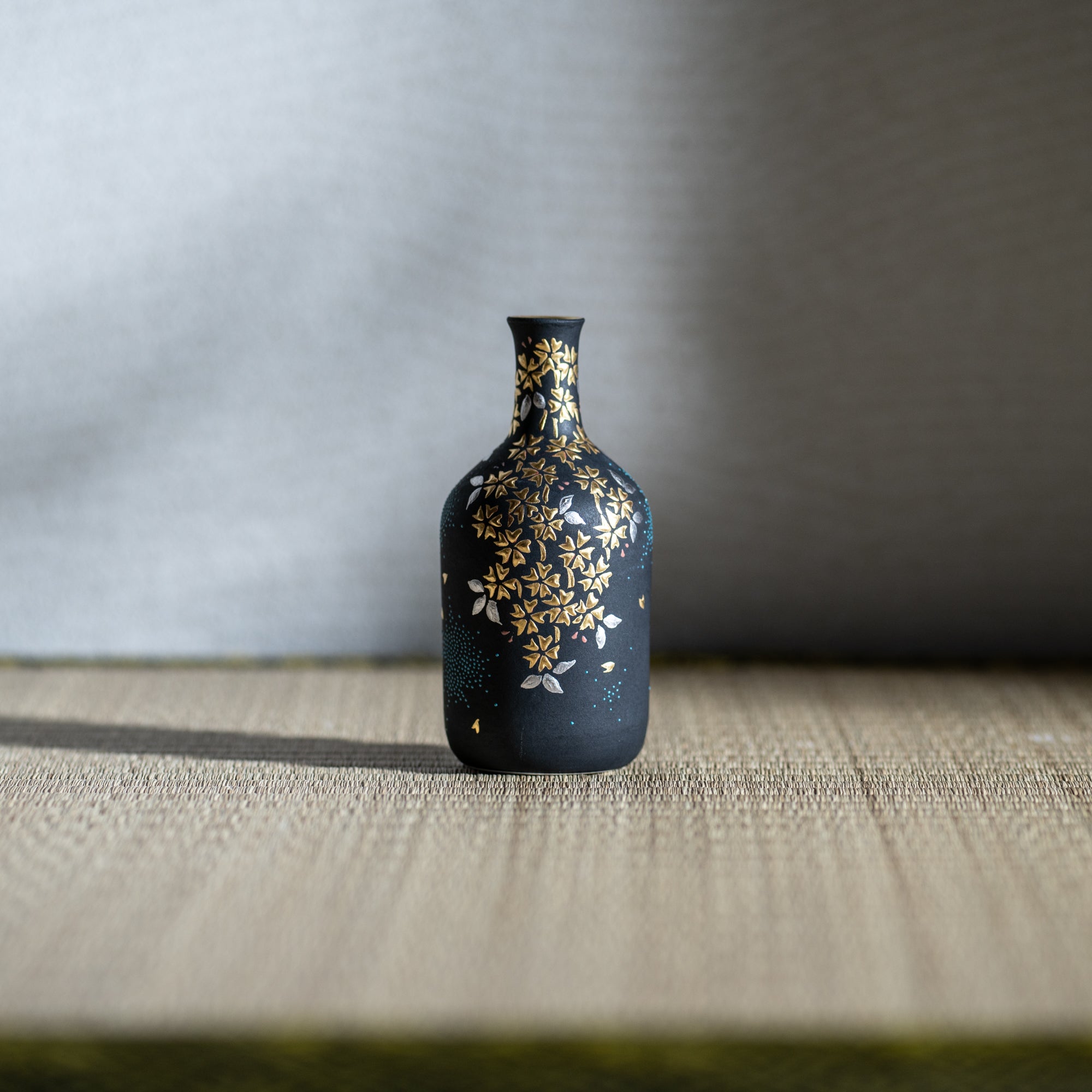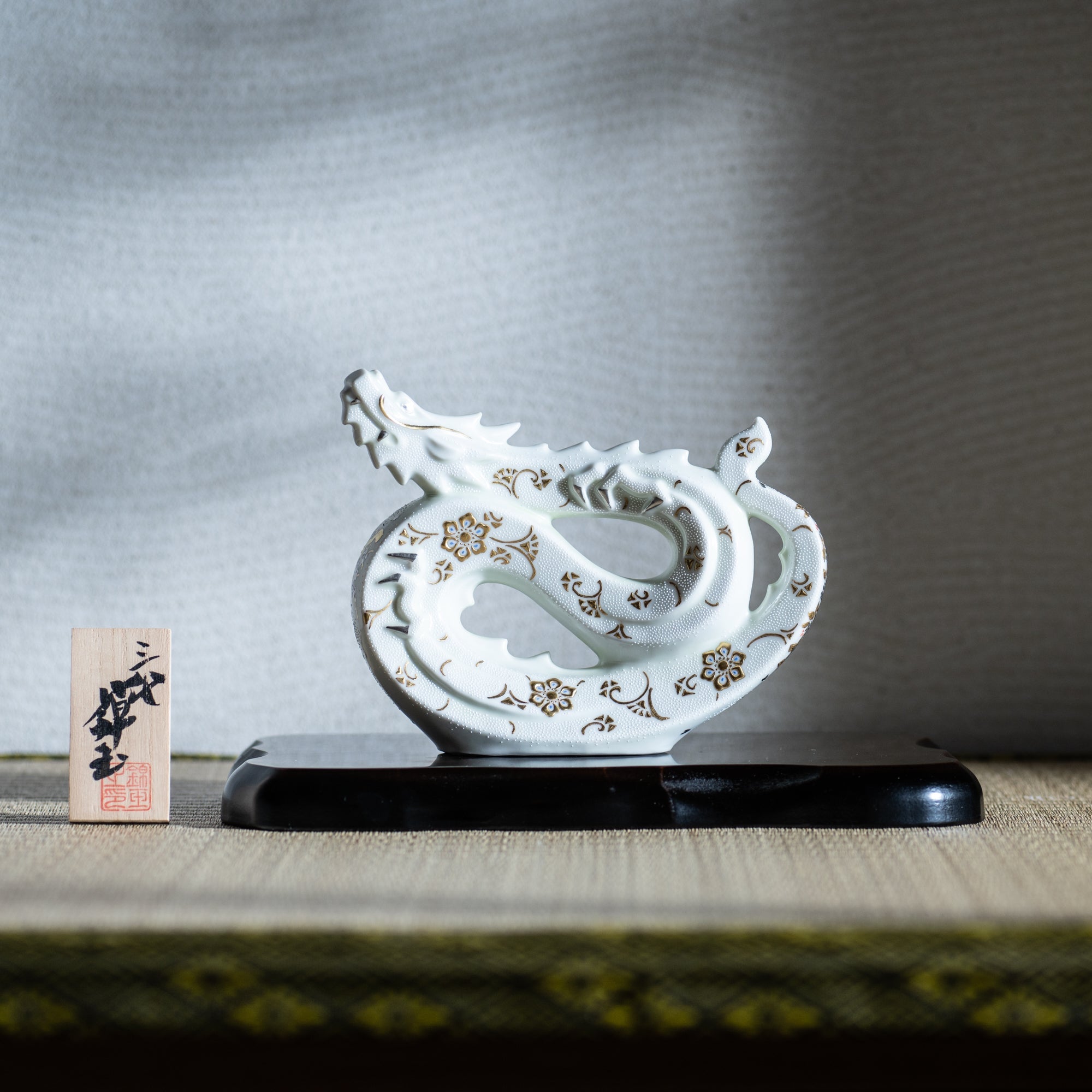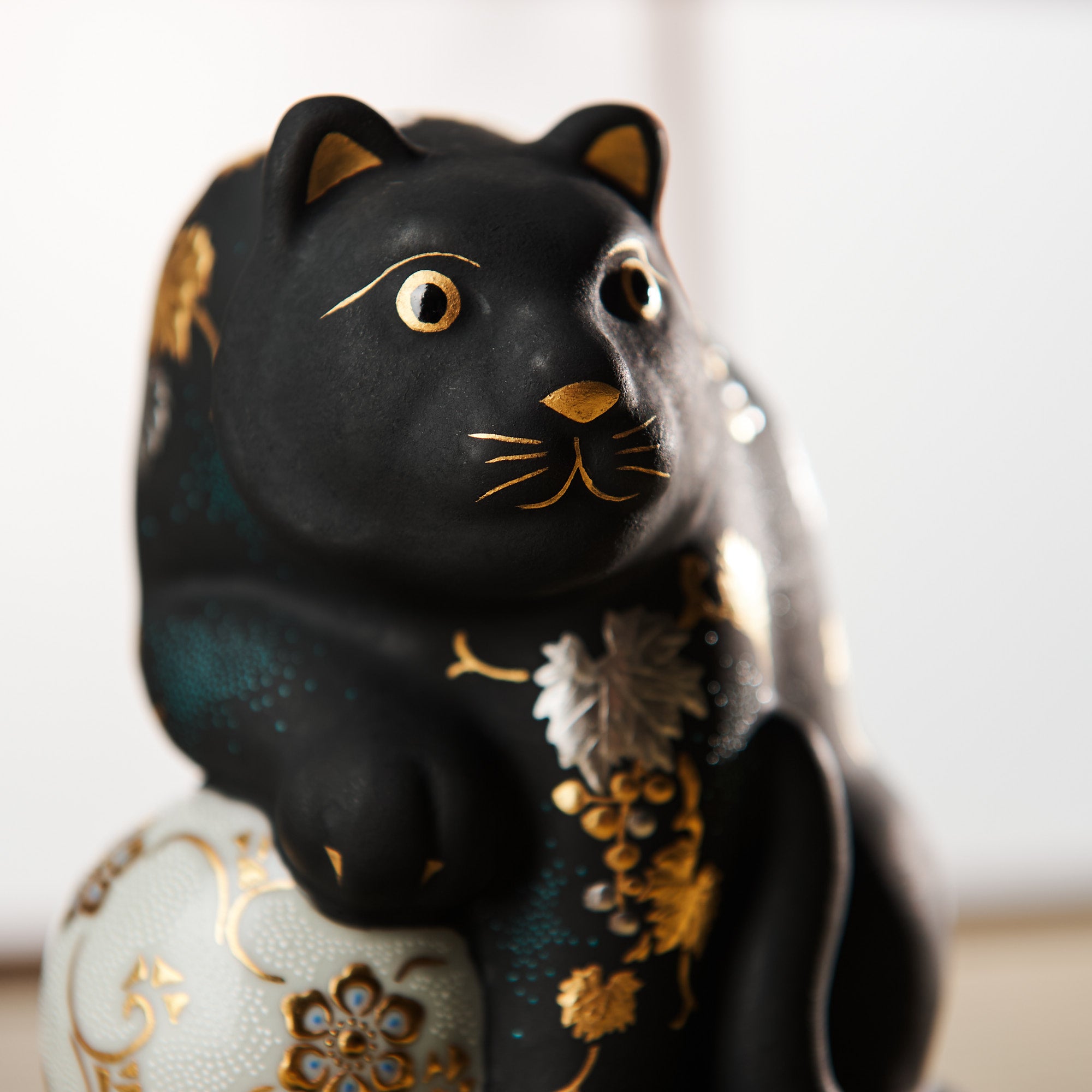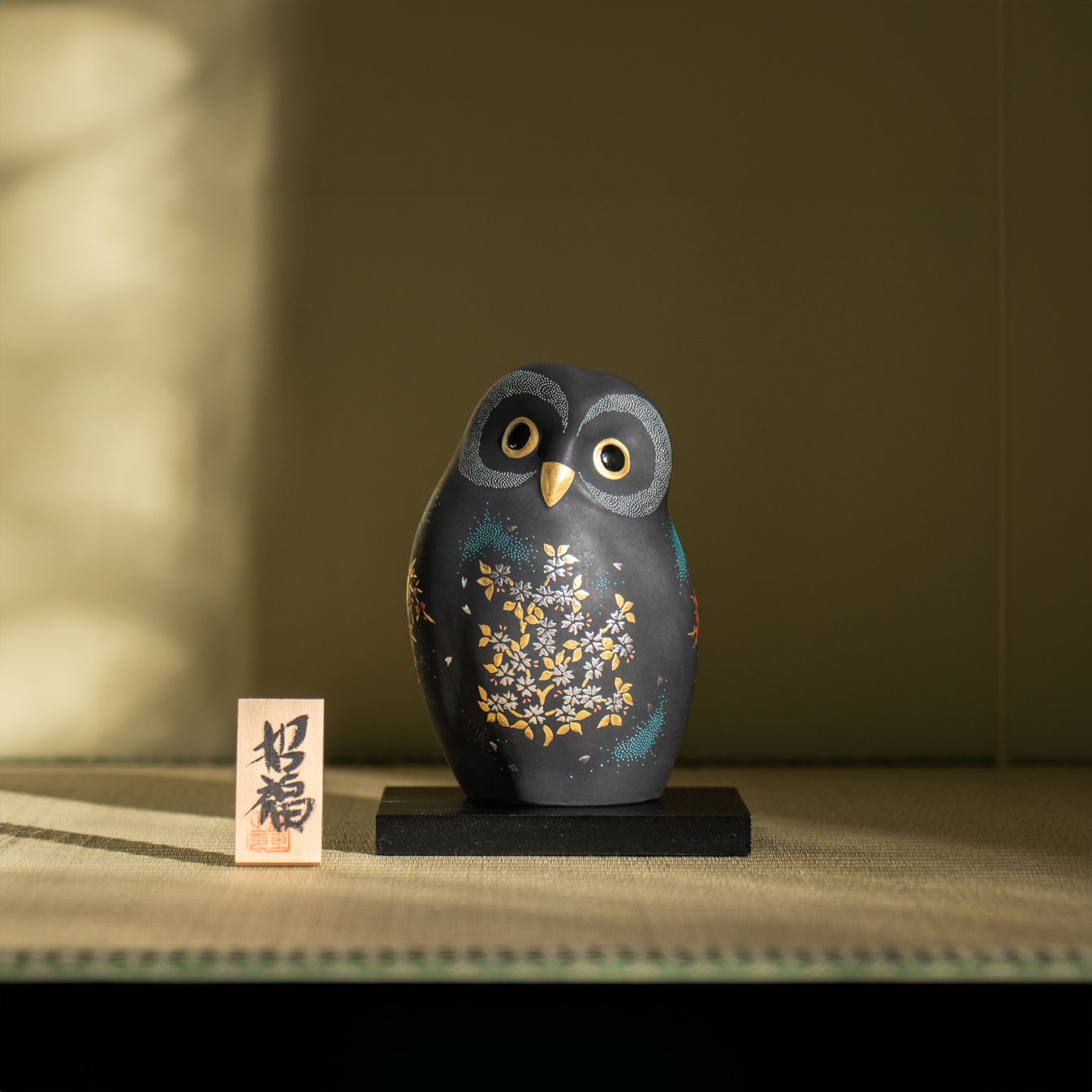
Dignity and Grace
Nakada Kingyoku
Nakada Kingyoku's work embodies Rimpa Artistry with its dignified elegance and graceful beauty. He harmonizes the interplay between space and miniature craftsmanship, combining modern sensibilities with meticulous techniques through the artistry of blue dots and raised gold. His work not only pays homage to his inherited heritage but also introduces innovations to elevate the aochibu style.
The Finesse of Aochibu Blue Dot Artistry
In the realm of Kutani ware, a distinctive style known as aochibu "blue dots," has been captivating the eyes of art enthusiasts and collectors. This technique, characterized by its precision and the intricate dance of color and gold, has been passed down to Nakada Kingyoku, a third-generation artisan whose work embodies the elegance and beauty of this traditional craft.
Revolutionizing tradition, Nakada has expanded the vocabulary of the aochibu technique by introducing platinum alongside gold, enriching the textural and visual complexity of his pieces. This innovation not only diversifies the color palette but also adds a contemporary edge to each work, making it resonate with modern aesthetics while retaining its traditional essence.
Inheriting the Legacy of the Rimpa School
In his pursuit of elevating the traditional Japanese aesthetic, Nakada also skillfully integrates the morikin "raised gold" technique, a meticulous process of layering and decorating with gold that creates a tactile sense of luxury and intricacy on his pieces. This technique, characterized by its raised patterns achieved through the application of a vivid bengara (red ocher) base before being overlaid with gold, underscores Nakada's commitment to traditional craftsmanship while pushing the boundaries of innovation.
Kingyoku's work, deeply reflective of the beauty of space in Japanese art, resonates with the Rimpa school's ethos. Using his meticulous blue dot and raised gold techniques, he portrays various motifs, adeptly balancing the embellished areas with blank spaces. By not filling every inch of the porcelain surface, the presence of space enhances the dignity and grace of the final piece.

Biography
Under the tutelage of his father, Nakada Kingyoku the Second, and decade of rigorous apprenticeship, he has culminated in a profound mastery over the aochibu "blue dots" and morikin "raised gold" techniques. Blending traditional elegance with innovative flair through the use of platinum and spatial elements inspired by the Rimpa school. His commitment to excellence is reflected in his meticulous choice of tools and materials including platinum, ensuring each piece he creates embodies the intricate beauty characteristic of Kutani ware.
His work was selected for the National Traditional Craftwork Exhibition and the Traditional Kutani Craft Exhibition. He was officially certified as a Kutani Ware Traditional Craftsperson. In 2017, he was honored with the Ishikawa Prefecture Traditional Industry, Outstanding Technician Encouragement Award, underscoring his significant contributions to the field and recognizing his efforts to push the boundaries of traditional craftsmanship.




